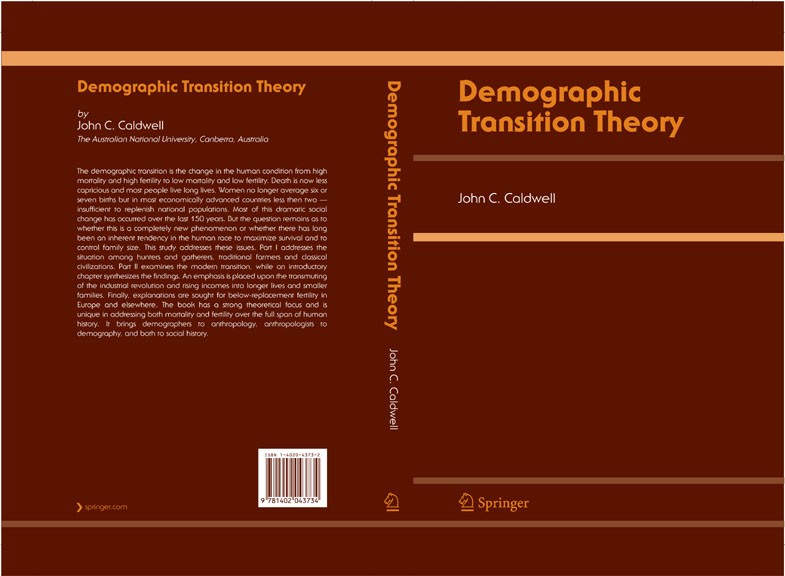| 书目名称 | Demographic Transition Theory |
| 编辑 | John C. Caldwell |
| 视频video | http://file.papertrans.cn/266/265294/265294.mp4 |
| 概述 | A strong theoretical perspective.The integration of demographic transition theory over the whole of human existence.The integration of mortality and fertility transition theory.The examination of the |
| 图书封面 |  |
| 描述 | .The demographic transition is the change in the human condition from high mortality and high fertility to low mortality and low fertility. Death is now less capricious and most people live long lives. Women no longer average six or seven births but in most economically advanced countries less than two — insufficient to replenish national populations. Most of this dramatic social change has occurred over the last 150 years. But the question remains as to whether this is a completely new phenomenon or whether there has long been an inherent tendency in the human race to maximize survival and to control family size. This study addresses these issues. Part I addresses the situation among hunters and gatherers, traditional farmers and classical civilizations. Part II examines the modern transition, while an introductory chapter synthesizes the findings. An emphasis is placed upon the transmuting of the industrial revolution and rising incomes into longer lives and smaller families. Finally, explanations are sought for below-replacement fertility in Europe and elsewhere. The book has a strong theoretical focus and is unique in addressing both mortality and fertility over the full span o |
| 出版日期 | Book 2006 |
| 关键词 | Demographic transition; Demography; Fertility decline; Fertility transition; behavior; mortality; sexual b |
| 版次 | 1 |
| doi | https://doi.org/10.1007/978-1-4020-4498-4 |
| isbn_softcover | 978-90-481-7116-3 |
| isbn_ebook | 978-1-4020-4498-4 |
| copyright | Springer Science+Business Media B.V. 2006 |
 |Archiver|手机版|小黑屋|
派博传思国际
( 京公网安备110108008328)
GMT+8, 2025-11-7 13:17
|Archiver|手机版|小黑屋|
派博传思国际
( 京公网安备110108008328)
GMT+8, 2025-11-7 13:17


